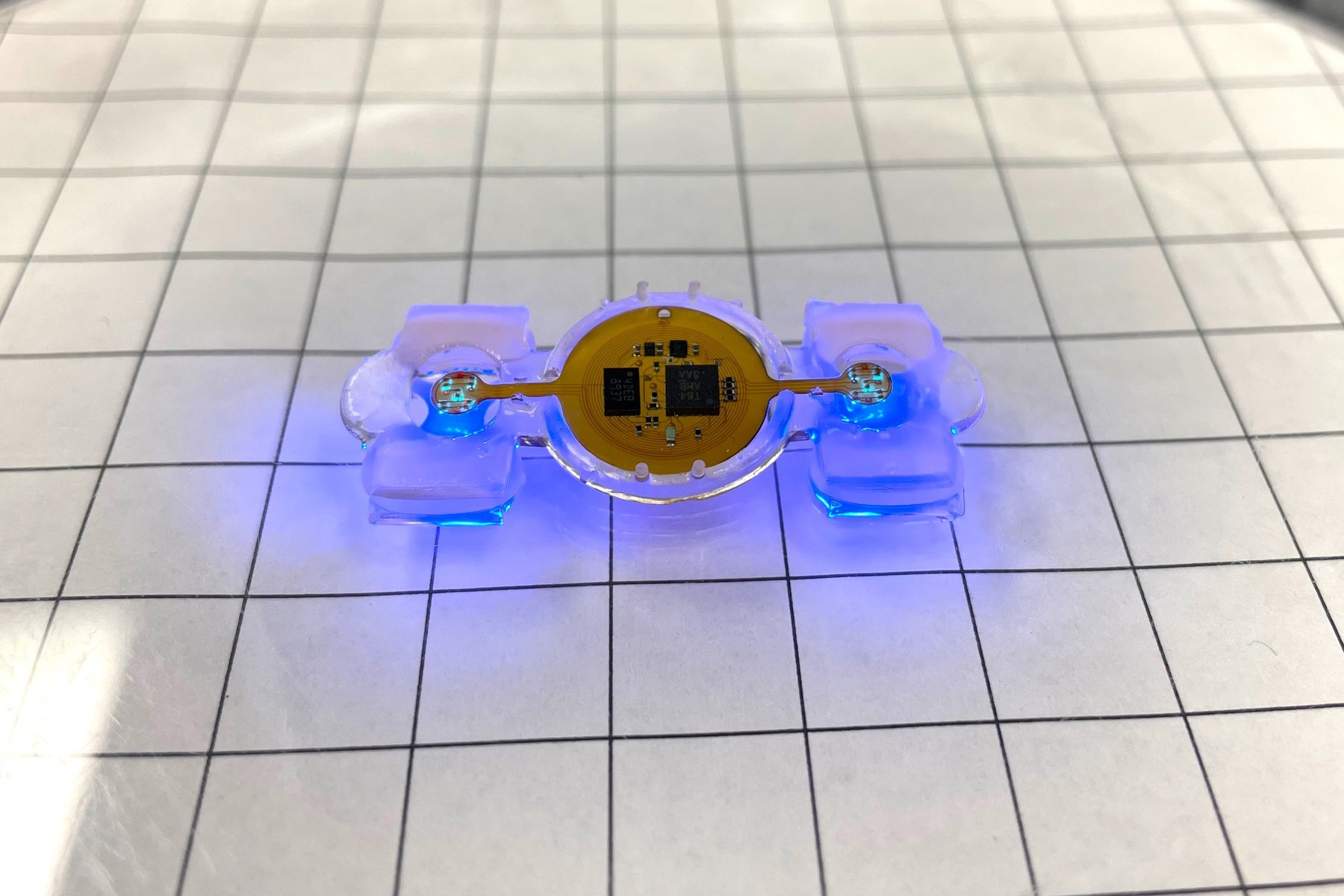Reviewed by Aimee MolineuxJan 19 2023
The miniature biological robots walked initially; then, they witnessed the light; and, now, they have gained a new trick: remote control.
 Remotely controlled miniature biological robots have many potential applications in medicine, sensing and environmental monitoring. Image Credit: Yongdeok Kim
Remotely controlled miniature biological robots have many potential applications in medicine, sensing and environmental monitoring. Image Credit: Yongdeok Kim
The scientists at the University of Illinois Urbana-Champaign, Northwestern University, and collaborating institutions stated that the so-called hybrid “eBiobots” are the first to integrate soft materials, microelectronics, and living muscle. They explained their centimeter-scale biological machines in the Science Robotics journal.
Integrating microelectronics allows the merger of the biological world and the electronics world, both with many advantages of their own, to now produce these electronic biobots and machines that could be useful for many medical, sensing, and environmental applications in the future.
Rashid Bashir, Study Co-Leader and Professor, Bioengineering, University of Illinois
Bashir is also a Dean of the Grainger College of Engineering.
The research group of Bashir has introduced the development of biobots, which are small biological robots that have been powered by mouse muscle tissue grown on a soft 3D-printed polymer skeleton. In 2012, they illustrated walking biobots; and in 2016, they demonstrated light-activated biobots.
The light activation provided the scientists some control, but practical applications were restricted by the question of how to supply the light pulses to the biobots outside the laboratory environment.
That question was answered by Northwestern University professor John A. Rogers, a pioneer in flexible bioelectronics, whose team assisted in combining small battery-free micro-LEDs and wireless microelectronics. This enabled the scientists to control the eBiobots remotely.
This unusual combination of technology and biology opens up vast opportunities in creating self-healing, learning, evolving, communicating, and self-organizing engineered systems. We feel that it’s a very fertile ground for future research with specific potential applications in biomedicine and environmental monitoring.
John A. Rogers, Professor, Materials Science and Engineering, Biomedical Engineering and Neurological Surgery, Northwestern University
Rogers is also the director of the Querrey Simpson Institute for Bioelectronics.
The scientists set out to remove heavy tethering wires and batteries to give the biobots the freedom of movement needed for practical applications. The eBiobots utilize a receiver coil to collect power and offer a controlled output voltage to power the micro-LEDs.
This was stated by the co-first author Zhengwei Li, an assistant professor of biomedical engineering at the University of Houston.
The scientists could transmit a wireless signal to the eBiobots that alerts the LEDs to pulse. The LEDs excite the light-sensitive engineered muscle to contract, thereby moving the polymer legs so that the machines “walk.”
The micro-LEDs are highly targeted so they can trigger particular portions of muscle, thereby making the eBiobot turn in the preferred direction.
Computational modeling was utilized by scientists to regulate the eBiobot design and component integration for speed, strength, and maneuverability. Illinois professor of mechanical sciences and engineering Mattia Gazzola headed the design and simulation of the eBiobots.
The additive 3D printing and iterative design of the scaffolds enabled quick cycles of experiments and performance enhancement, stated Gazzola and co-first author Xiaotian Zhang, a postdoctoral researcher in Gazzola’s lab.
The design enables feasible future integration of extra microelectronics, like biological and chemical sensors, or 3D-printed scaffold parts for functions like transporting or pushing things that the biobots experience, stated co-first author Youngdeok Kim, who finished the work as a graduate student at Illinois.
The researchers said that the fusion of biological neurons or electronic sensors would enable the eBiobots to sense and respond to toxins present in the surrounding, biomarkers for disease, and more prospects.
In developing a first-ever hybrid bioelectronic robot, we are opening the door for a new paradigm of applications for health care innovation, such as in-situ biopsies and analysis, minimum invasive surgery, or even cancer detection within the human body.
Zhengwei Li, Study Co-First Author and Assistant Professor, Biomedical Engineering, University of Houston
This work was financially supported by the National Science Foundation and the National Institutes of Health.
Journal Reference:
Kim, Y., et al. (2023) Remote control of muscle-driven miniature robots with battery-free wireless optoelectronics. Science Robotics. doi.org/10.1126/scirobotics.add1053.